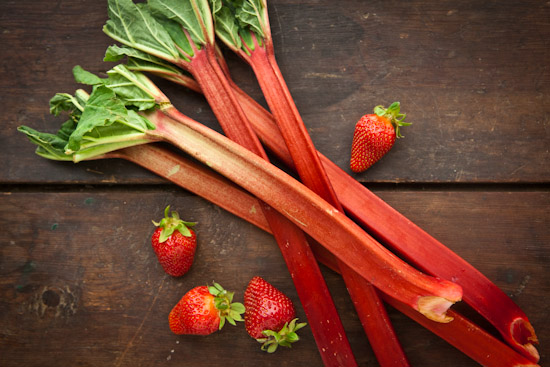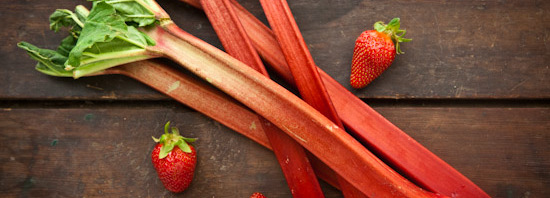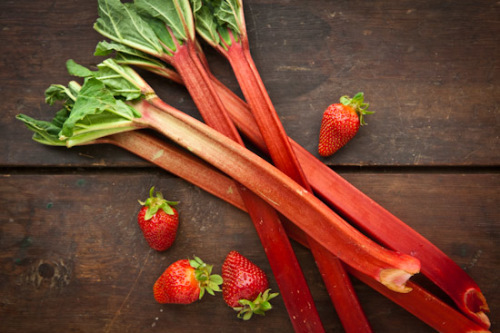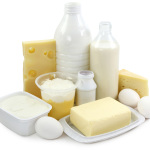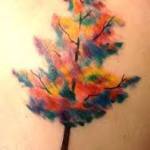Rhubarb is his enemy sour flavor one of the few vegetables that is used for desserts, jams and cakes, as only the reddish-purple stems and not the broccoli-like fruit is cooked.
So do not be surprised if you have never seen the rhubarb fruit because the flowers are usually pinched off before fruiting, so all the power remains in the stems.
Fancy tart sweetness?
Then quickly try out our delicious rhubarb recipes.
Rhubarb – A long history
The large-leaved crop comes from the northern Asia and belongs to the family Polygonaceae. Rhubarb has already been appreciated since time immemorial because of its fleshy stems. Because rhubarb has a long tradition not only as an ornamental plant, but above all as a medical medicinal plant. Only in the 18th century it was officially classified by botanists as a vegetable plant. However, only the edible leaf stalks that can grow up to one meter high. The rhubarb has to be cooked to be eaten, because raw rhubarb is inedible. Caution: The leaves contain toxic substances.
The Dream Team – Strawberry and Rhubarb
The rhubarb season is from April to July – just long enough to overlap with the beginning of strawberry season. Strawberry and rhubarb are created for each other, because they complement each other perfectly. The red berry brings the sweetness that is missing from the rhubarb. Turn the stem vegetables provides plenty of pectin – a natural gelling agent, to the lack of strawberry. Not for nothing is strawberry-rhubarb jam classic when it comes to canning. Nevertheless, rhubarb jam tastes great with other fruits.
A bar full of nutrients
Rhubarb is wonderful in calories with an extremely high water content:
100 g contain just 16 calories! To neutralize the natural acidity, rhubarb is however often made with lots of sugar, which the original low calorie naturally drives according to the height. So go with sugar sparingly! Healthy Rhubarb is all because it contains phosphorus, calcium, magnesium, potassium, iron and vitamins! Due to the high fiber content, the stems in China for thousands of years used for medicinal purposes and used as a natural laxative.
What should you consider when buying?
The rhubarb stalks have depending on the variety, a green to violet color. The variety Queen Victoria is green, the varieties Canada Red or Macdonald are red. The red stems with red pulp contain the least acid and are therefore more digestible. The freshness criteria, however, are the same for all grades: The rods should be smooth, thick and solid feel and have to break crisp. From a freshly broken stalk some juice must come out.
Storing and freezing
The rods should ideally be consumed at the latest after the purchase on the day. You can keep a pinch, a few days in the vegetable drawer of your refrigerator rhubarb, however. To freeze the chopped pieces or the compote should be placed in a freezer bag.
Tricks to neutralize the acid
- Peel: The skin contains a lot of acid. Peeled rhubarb is so mild. With thick stems just peel the outer skin with a knife (always at the lower end, ie at the interface start).
- Quick cook: Boil out the rods 2 min in boiling water.
- Sugaring: Cut rhubarb small and let soak for a few hours in a bowl with some sugar.
- With milk products combine (cottage cheese, yogurt, mascarpone, pudding, rice pudding, cream cheese …), because that the acidity is balanced.
The small cooking instructions
Cut the rhubarb pieces small and put to boil in a pot. Per kilo add 100 g of sugar and cook 20 minutes over low heat until the pieces are soft. To get a softer consistency, simply enter a large glass of water.
Rhubarb: Versatile!
- The soft texture is wonderful for Crumbles, muffins or cakes.
- pink rhubarb juice or even most rare rhubarb ice drink are all the rage. Also delicious: a strawberry-rhubarb smoothie
- A cream gets through the rhubarb a refreshing note.
- When preparing jam or compote, try the rhubarb once with apples and lightly toasted almonds.
- In combination with chocolate or in a Tiramisu rhubarb makes for a wonderful surprise!
- Ideal for children: A rhubarb biscuits casserole or a rhubarb semolina pudding!
- For large and small: Rhabarbereis is simply irresistible!
Related Posts
